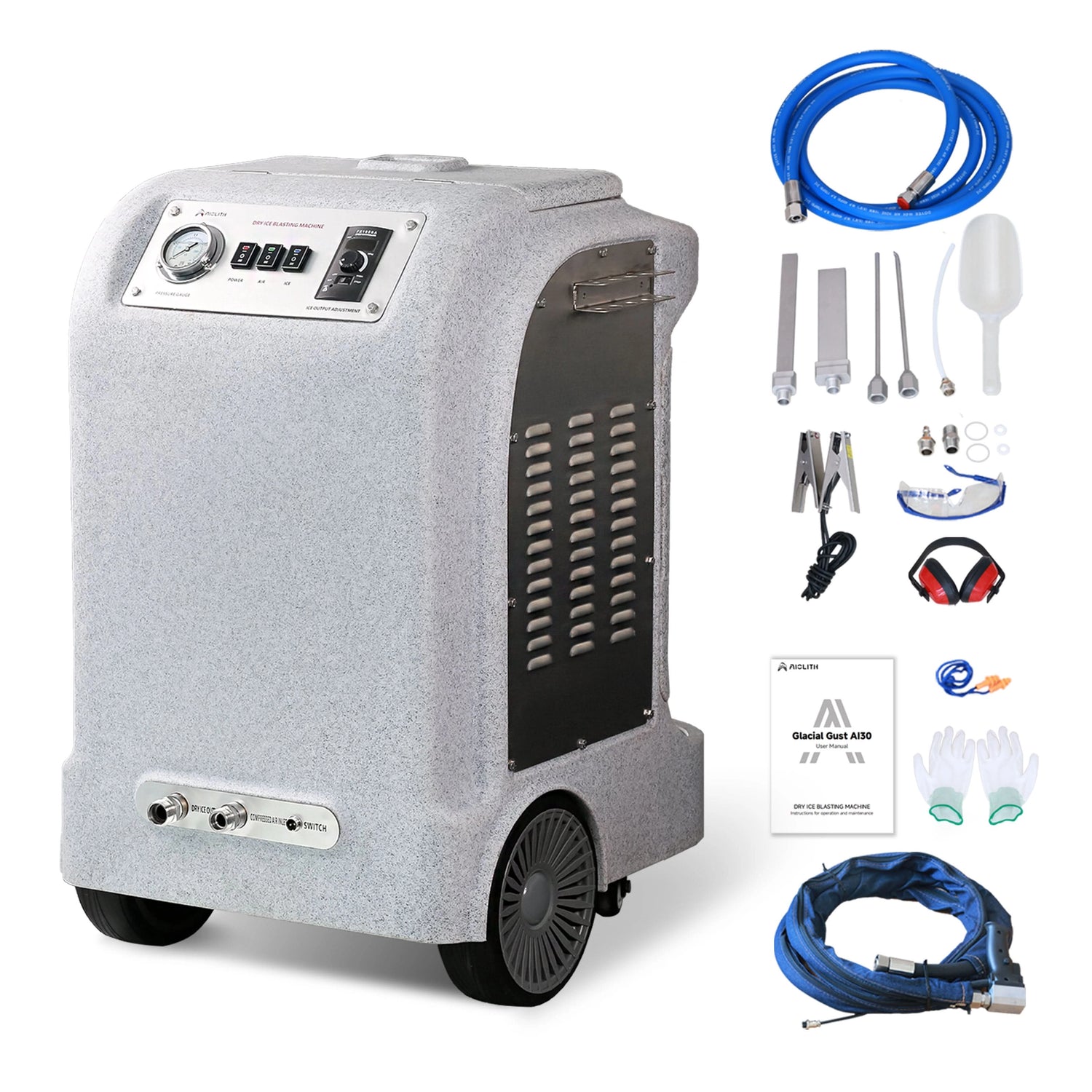Do Ultrasonic Scrubbers Really Work? 7 Crucial Truths About Cleaning Technology Every Facility Manager Must Know
Share
Why Facility Managers Question Ultrasonic Scrubbers
Many facility managers and business owners are constantly asking: Do ultrasonic scrubbers really work? The promise is tempting — cleaning through sound waves instead of brushes.
In theory, ultrasonic technology uses high-frequency vibrations in liquid to dislodge dirt, grease, and microbes from surfaces. It’s widely used in healthcare, electronics, and laboratories for cleaning delicate instruments.
But when applied to commercial floor cleaning, the reality is more complex. Ultrasonic scrubbers do work for very specific, small-scale cleaning tasks, but for large commercial facilities, they fall short compared to industrial-grade solutions like the Aiolith floor scrubber.
According to the Journal of Cleaning Science and Technology (Xu et al., 2020), ultrasonic cleaning is effective at removing microscopic contaminants in controlled settings but is not a replacement for mechanical scrubbing on large floor surfaces.
How Ultrasonic Scrubbers Work
Ultrasonic scrubbers use the principle of cavitation — when sound waves create tiny bubbles in liquid that collapse with force, loosening contaminants. This makes them powerful for:
- Removing grease from surgical tools.
- Cleaning microchips and sensitive electronics.
- Eliminating biofilm in laboratory glassware.
However, these benefits rely on immersion in liquid tanks, not open commercial floor spaces. This limitation is why ultrasonic scrubbers are rarely used in malls, hospitals, or warehouses.
Comparing Ultrasonic Scrubbers and Aiolith Commercial Floor Scrubbers
| Feature | Ultrasonic Scrubbers | Aiolith Floor Scrubbers |
|---|---|---|
| Best Application | Medical tools, electronics, lab glassware | Large commercial floors, hospitals, warehouses |
| Cleaning Method | Sound-wave cavitation in liquid tanks | Mechanical scrubbing + suction + debris collection |
| Surface Coverage | Small parts only | Hundreds to thousands of square meters |
| Maintenance Needs | Regular tank cleaning, precise calibration | Routine pad/squeegee replacement, battery checks |
| Cost Efficiency | High for niche uses, not scalable for facilities | High ROI for large-scale floor cleaning |
| Longevity & Durability | Limited to small instruments | 7–10 years with proper care (Aiolith machines) |
Why Aiolith Floor Scrubbers Remain the Practical Choice
Unlike ultrasonic cleaners, Aiolith commercial floor scrubbers are built to handle real-world cleaning challenges. Their machines combine:
- High-efficiency scrubbing brushes to remove dirt and grime.
- Advanced suction systems that leave floors dry and safe.
- Debris collection trays to eliminate pre-sweeping in many cases.
- Durable construction designed for years of heavy use in demanding facilities.
Facility managers choose Aiolith because floor cleaning requires physical scrubbing action, not lab-based ultrasonic methods.
Key Limitations of Ultrasonic Scrubbers in Facility Cleaning
- Scale of Operation – They cannot cover large areas like airports or supermarkets.
- Surface Requirements – Floors cannot be submerged in tanks, making ultrasonic impractical.
- Cost Inefficiency – Expensive equipment with limited application.
- Maintenance Complexity – Requires distilled water, chemical solutions, and frequent calibration.
- Incompatibility with Debris – Large dirt particles and trash cannot be removed.
A study in Applied Acoustics (Patil et al., 2021) confirmed that ultrasonic cleaning effectiveness decreases significantly outside controlled immersion environments, highlighting why it is not used in commercial floor care.
When Ultrasonic Cleaning Does Make Sense
- Medical and dental clinics – for tools that must be free of microscopic contamination.
- Electronics industry – where circuit boards need delicate, residue-free cleaning.
- Laboratories – for precision glassware that mechanical scrubbing would damage.
In these fields, ultrasonic technology is highly valuable. But for commercial floor cleaning, Aiolith scrubbers remain the realistic, cost-effective solution.
FAQ: Do Ultrasonic Scrubbers Really Work?
Q1: Are ultrasonic scrubbers effective for cleaning floors?
A: No. They are designed for small instruments, not large surfaces. For floors, Aiolith commercial scrubbers are the proven solution.
Q2: What industries benefit most from ultrasonic scrubbers?
A: Healthcare, laboratories, and electronics manufacturing.
Q3: Can ultrasonic technology remove bacteria?
A: Yes, in controlled environments it can reduce microbial contamination, but it’s not suitable for facility-wide disinfection.
Q4: How do Aiolith scrubbers compare in cost-effectiveness?
A: For facilities, Aiolith scrubbers deliver a far better return on investment by handling large spaces quickly and efficiently.
Q5: Is ultrasonic cleaning environmentally friendly?
A: It reduces chemical use but requires high energy and constant water replacement, which limits its eco-efficiency at scale.
Conclusion: Ultrasonic vs. Commercial Scrubbers
So, do ultrasonic scrubbers really work? Yes — but only in very specific industries where small tools need precision cleaning. For commercial floor cleaning, they are not practical, scalable, or cost-effective.
The smarter choice for facility managers remains Aiolith commercial floor scrubbers, which provide durability, efficiency, and long-term value across high-traffic environments.
References
-
Xu, L., Chen, Y., & Zhang, H. (2020). Ultrasonic cleaning for surface decontamination: effectiveness and applications. Journal of Cleaning Science and Technology. Read here.
-
Patil, S., Lee, J., & Brown, K. (2021). Cavitation dynamics and limitations in ultrasonic cleaning applications. Applied Acoustics, 178, 108032. Available here.

